Myst Game Analysis
Introduction
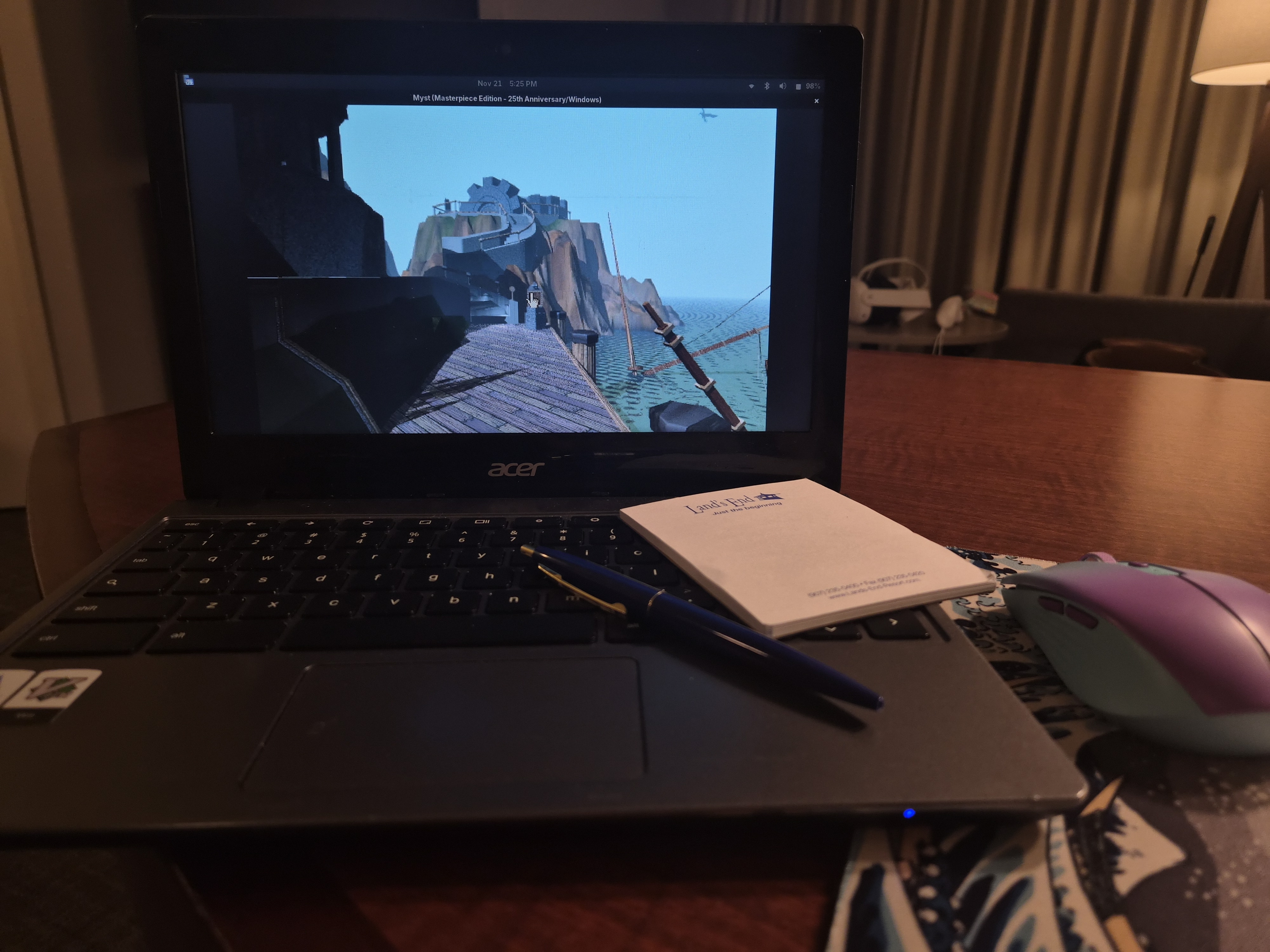
In my previous undergrad, my game dev professor saw me mention Myst as one of my all time favorite games in an assignment. Rather excited he approached me after class and mentioned he had worked with parroty interactive, known for such titles as Microshaft Winblows 98, Star Warped, and Pyst. While he never worked on Pyst, the parody game of Myst, he mentioned how groundbreaking CD-ROM was for the industry especially with titles like Myst. The pre-rendered world(s) Myst had its players live in for its runtime were like nothing anybody had seen before and this often is what people bring up with thinking about Myst. The now oft forgotten genius of Myst really does lie in its design, especially around the way its world, simple gameplay and narrative to make an experience that I think have come to define games as a form of art ever since.
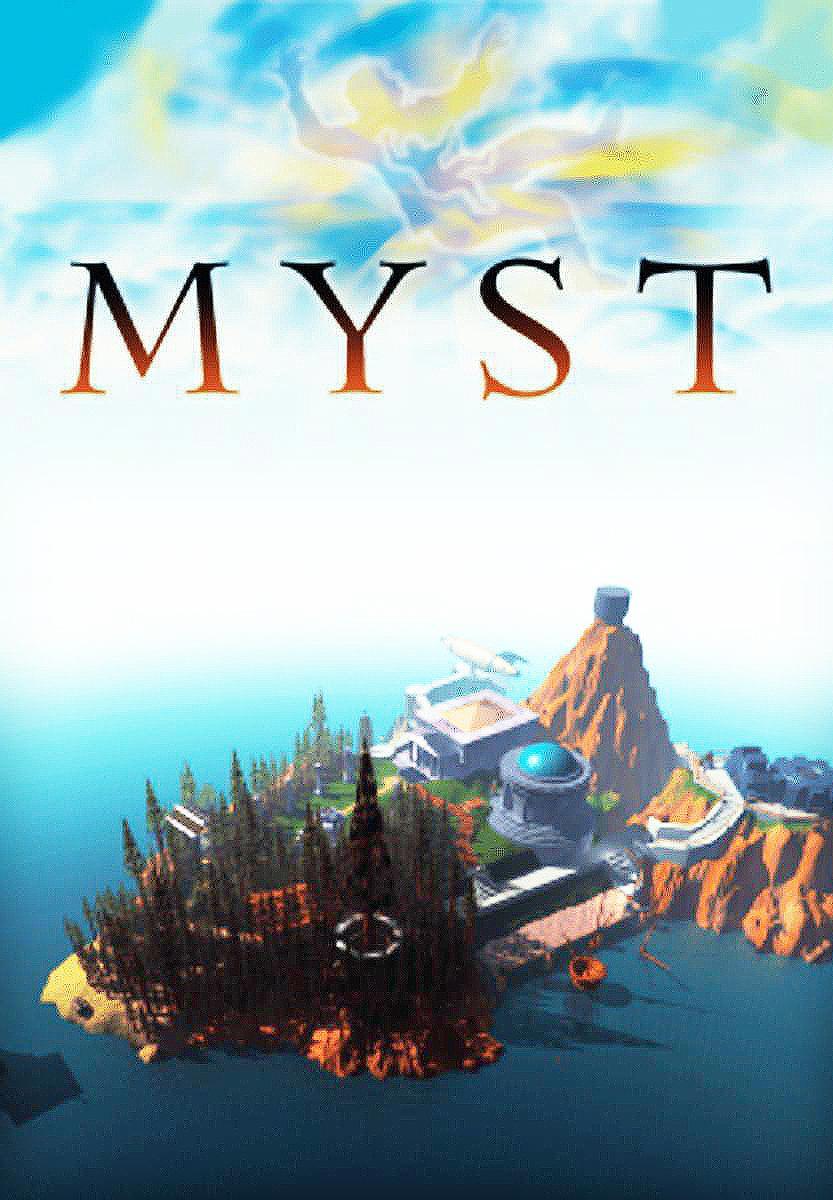
My story with Myst is unique to the ones I have seen given from others. Indivduals often mention being alive for the release, of which I was not, some others talk about it being introduced to them by a teacher or school librarian (as it was a game famous for being on public school computers) to encourage them to read. No, I stumbled rather clumsily upon the game while visiting one of my favorite things in high school, a monthly garage sale a local HOA held to raise funds in Palmer Alaska. This actually was from the first day I discovered it, wandering around town trying to find garage sales where I could get good deals on then retro games. I was looking for Nintendo 64 or Playstation Titles, but that day the deals they had on PC games was too good to pass up. Big box Rainbow Six and its expansions, several Humongous Entertainment titles like Freddi Fish, Pajama Sam, and Spy Fox. But one lone CD case had me most entralled of them all "Myst Masterpiece Edition" as a youtube addicted teenager of the early 2010s I had heard of this game from people I saw as authoritative sources and knew it was supposed to be this vital game to the history of modern world design and PC gaming. However I had no idea what I was in for when I came home and suffered through windows compatibility layers to install. The game was clunky, kind of weird looking, but fascinating at the same time. Soon I was keeping notes, taking everything in and living on Myst Island. To this day I still mourn the cancelled Myst Island theme park and near obsessively follow whatever Cyan Worlds is working on next. Riven is arguably the better more polished game, but Myst remains so much more intriging and strange in a way I havent been able to quite see since.
I dont know why I like Myst so much, I guess I just do. The 3604 words on this page are still insufficent to explain it, I guess.A Quick History Lesson
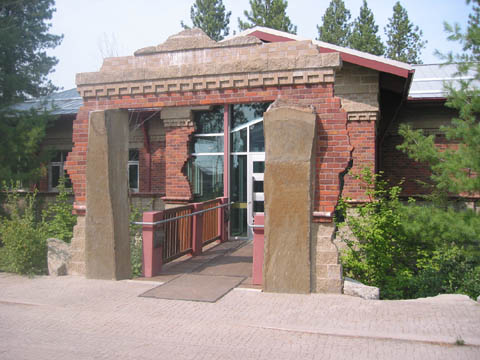
Cyan Worlds is currently the longest surviving independant game studio in the United States. It was founded when Rand Miller, who had been programming games as a hobby joined forces with his brother Robyn, who was studying the arts. At the time, "Hypercard" a development framework for Macintosh had just hit the scene and the Miller brothers got their feet wet with the surreal and strange title The Manhole. While not the focus of this analysis, it is a good example of what was to come.
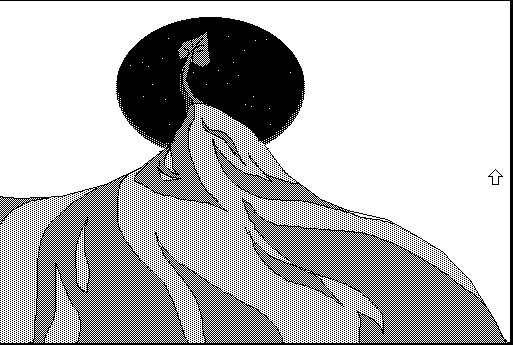
Hypercard allowed users to create and then link together cards in "stacks" similar to how a much of online hypertext works today. This enabled Robyn to digitally paint and even animate these intracate scenes in which the user was asked to explore, while Rand programmed in the functionality for some exploration based puzzles. For anyone who has played Myst this is starting to sound familiar. The Manhole was a general success and for a couple of titles Cyan became known for their unique adventure games made with Hypercard.
The early 90s rolled around and with it came the Compact Disc, and soon the standard known as CD-ROM. This standard exploded in popularity in the early 90s and a bit beyond. Offices adored CD-ROM since they held much more information than a standard 3 inch floppy, were extremely cheap to produce, and easy to store. Legal reference sets were on CD, SDKs were distributed on CDs, and who could forget the unbelievable amount of clip art sold on these discs. Actually, the prospect of highly portable (and cheap) videos and pictures became a primary reason the gaming industry rushed to join in the CD-ROM revolution.
Could there have been a more perfect time for Cyan, known for their complex game environments, to release something truly groundbreaking on a CD-ROM?
Myst released and became the killer app for consumer grade CD-ROM drives. In fact, within a couple years, Myst had already broken the record for most sold PC game of all time. People at the time were dazzled by the seemingly impossible 3d graphics and detailed world. Since 1993, the graphics have not dazzled many, but the limits of the time have only really proven to give Myst its unique character. The amateur acting from the Miller brothers in FMV sequences spliced into the pre-rendered backgrounds, the low poly look, the plain sometimes single color textures. This all coalesed into a game people are still talking about to this very day.
There are two remakes, realMyst came out 7 years later and was a fully 3D environment for the player to roam in. The most recent, Myst(2021), was developed in the Unreal Engine and even built for VR support. While these versions each look good in their own right, theres something rather beautiful in the flaws and limits of the original. The story is about being in a place youve never seen and probably shouldnt be, and it is my opinion that the original 1993 title does that vibe the best.
I think its the trees, honestly, they have this strange looking leaf texture applied to a cone that is then kitbashed with the trunk, it looks alien yet familiar all at once. It kind of speaks to me.The System
The raw gameplay of Myst and its sequels boils down to two primary components: exploration and puzzle solving. When first entering an age (or world) in Myst you are typically met with 1 or more directions to look and walk in. You are then expected to roam around finding clues to what you need to do next. Myst Island is actually a perfect setup for this. The island is littered with different strange buildings all with their own puzzles to solve and eventually enter other ages through. One example I will use will be the first age I ever figured out in Myst, Channelwood

When you first get on the island you are met with the following scene. A dock, a half sunken ship and some gears, with the rest of the island to the left. If you proceed towards the main section of the island you find a note from a character named Atrus, addressed to Catherine indicating something had gone horribly wrong. He mentions a secret message in the "antechamber" if youre playing the original you should have noticed a secret door to the direct left of the starting area. Going in and entering the required number will give you a FMV message from Atrus, where he mentions the library. You remember a vaugely library-looking building towards the center of the island so you head there finding two different colored books on either side of the room, two paintings, a map, a fireplace and a destroyed bookshelf. Looking at the books often brings back something completely charred but a few of the books are still readable. One mentions The Channelwood Age, if you have the flyover video turned on you should have noticed a strange looking tree on the otherside of the island. After a bit of exploration you find yourself in a shack with a water pressure valve and a safe with a painting of that strange tree. Going back to the library, you figure there must be something in the books that tells you what to do. You find things mentioning the Selenic and Mechanical ages but nothing about that tree. By this point you are familiar with the fact that nearly everything of note is interactive and you click the map near the door of the room. The only points you see a circle behind the outline of the library and the buildings youve looked at. Theres what looks like a beam coming from the circle denoting the library tower. Clicking the tower rotates it and you find that the beam turns red when falling upon a puzzle to be solved (such as the water pressure shack).
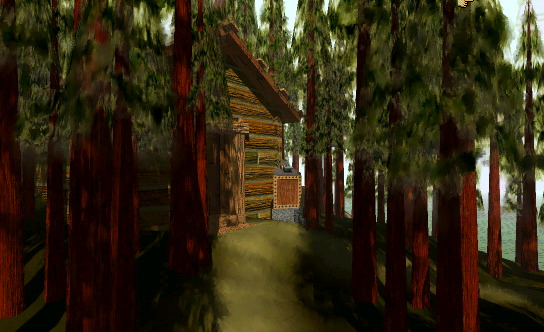
You leave the map as is and look around the library, you notice there is a painting of the back wall of the library but as an hallway. You click that strange painting and a secret passage emerges behind the burned books. You've found your first secret! Going in you take in the details an elevator is right before you. Entering you ascend up to a room with a pair of ladders one marked with a book, and the other marked with a key. You climb that first elevator and find that you are in the tower you rotated via the map and are looking at the tree and waterpressure shack the key must mean some sort of hint. You climb the second ladder and find a plaque reading a trio of numbers. In the original these numbers are always the same, but in the remake it can be randomized. You realize that this must be the safe combination. Rushing down the elevator and towards the shore you go to the water pressure shack and eagerly press in the combination you found,having written down the number on a nearby piece of paper, in case you forget. You open the safe and find a single box of matches. You click to get a match and then find that running the cursor on the strike paper lights said match. You turn to the furnace and realize its not lit on the bottom. You use your new found match to light the furnace and it starts up as you start turning the valve until it cant go anymore. The pressure gague shoots up and you hear a noise outside assuming the meaning of the painting you check on that tall tree and see that a place for standing room is in the tree and ascending. The tree is an elevator! Figuring you must turn the pressure off to get the elevator down you go back into the shack and turn the furnace all the way off, hearing the familar sound of the tree "growing" outside you go up to it and get in the nook right as it reaches ground level. You descend and are met with the first linking book you've encountered on Myst Island, to the Channelwood age.
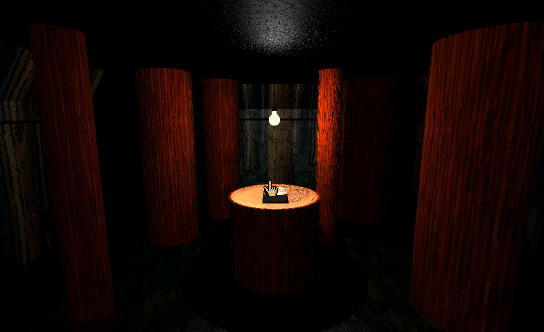
It's not a difficult puzzle when you explore and thus the game really does require exploration. How else are you going to guess the combination to the safe? How are you going to light the pilot light in that furnace? Speaking of, notice how vital information is obtained on one end of the island, and then used in completely different places? It might not be a bad idea to consider writing anything about Channelwood down from that book in the library...
Welcome to the world of Myst, where you play video games with a physical pad and paper (or meta quest screenshots). This might be one of the more infamous details about the series, you're asked to keep a lot of information on hand to solve the various puzzles and unlock the other ages of the game. In 1993 this was seen in keeping a notebook, or using the notes section in the game's manual, today many people may keep screenshots, so much so that is the method used in the VR version of the remake. The player's experience with the game is almost its own component of the game and narrative here.
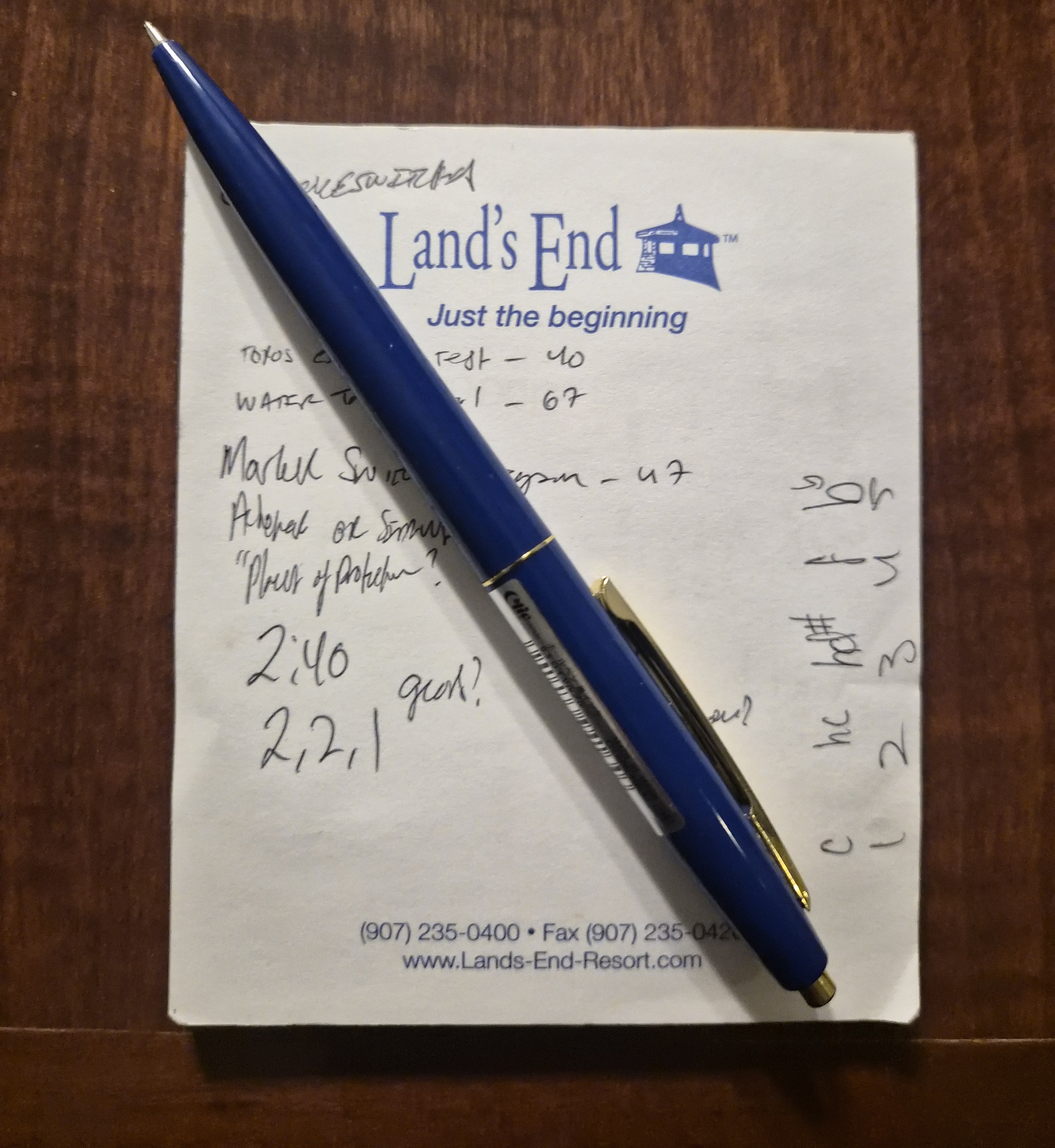
Speaking of narrative, much of it is told through books. Yes you do have a handful of cutscenes and if you're a completionist you hear enough from the principal characters in the game, but the meat of this story is in the writing you find scattered about the ages youre exploring. This game is one of those, the ones teachers loved to recommend to kids because it did in fact make them read often to understand this strange place they were exploring.
Since exploration is so vital it is worth breifly mentioning the hub and spoke world design of Myst. Myst Island acts as a central hub area, requiring puzzles like the one outlined before to then escape to the other "ages" of the game where additional pages for the books in the library are held relating to either brothers (more on that in the narrative section). Each age has its own style of exploration but generally is a closed loop compared to the open format of the island.
All these components come together for a game that does admittedly play at a glacial pace. Playing the game is often similar to reading a book like House of Leaves more than playing Halo, but the little things, having to strike the match, needing to pull levers with the mouse. Everything in the environment is very tactile, and while yes it gives it this interesting almost jules verne-esque aesthetic it also adds the the general immersion and enjoyment of the game. When playing myst youre not playing the role of "The Stranger" you ARE the stranger.
Its like when I enter Myst the device I am playing on sort of washes away and I am just on the island. Its me pulling those levers, turning those valves, lifting that book.The Narrative
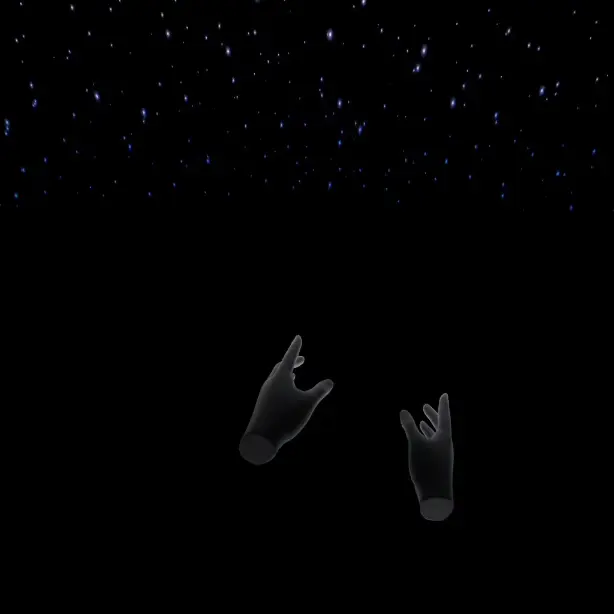
The story of Myst is actually a fairly simple family drama. The player is known as "The Stranger" a mysterious person who found a book fall right in front of them, however strangely enough, the photograph of the island in the book had the animated visage of crashing waves and passing birds. Upon putting their hand on the page The Stranger was transported to the island known as Myst. Soon they had found that Atrus, the enigmatic resident of the island felt he may have been betrayed by one of his two sons and repeatedly addresses his wife, Catherine, though it is clear Catherine has not arrived to the island quite yet either. In the library The Stranger finds two books, with torn out pages in them upon putting them back in they see faces peeking through the static, one, named Sirrus indicating that the other, Achenar cannot be trusted. After reading from the surviving books in the library it becomes clear that these are the sons of Atrus and one of them is the betrayer of him. The stranger ventures through the island, finding the other linking books to different ages, or worlds contructed through "the art" a process of writing so powerful it creates worlds. In these ages pages for both Sirrus and Achenar are found.
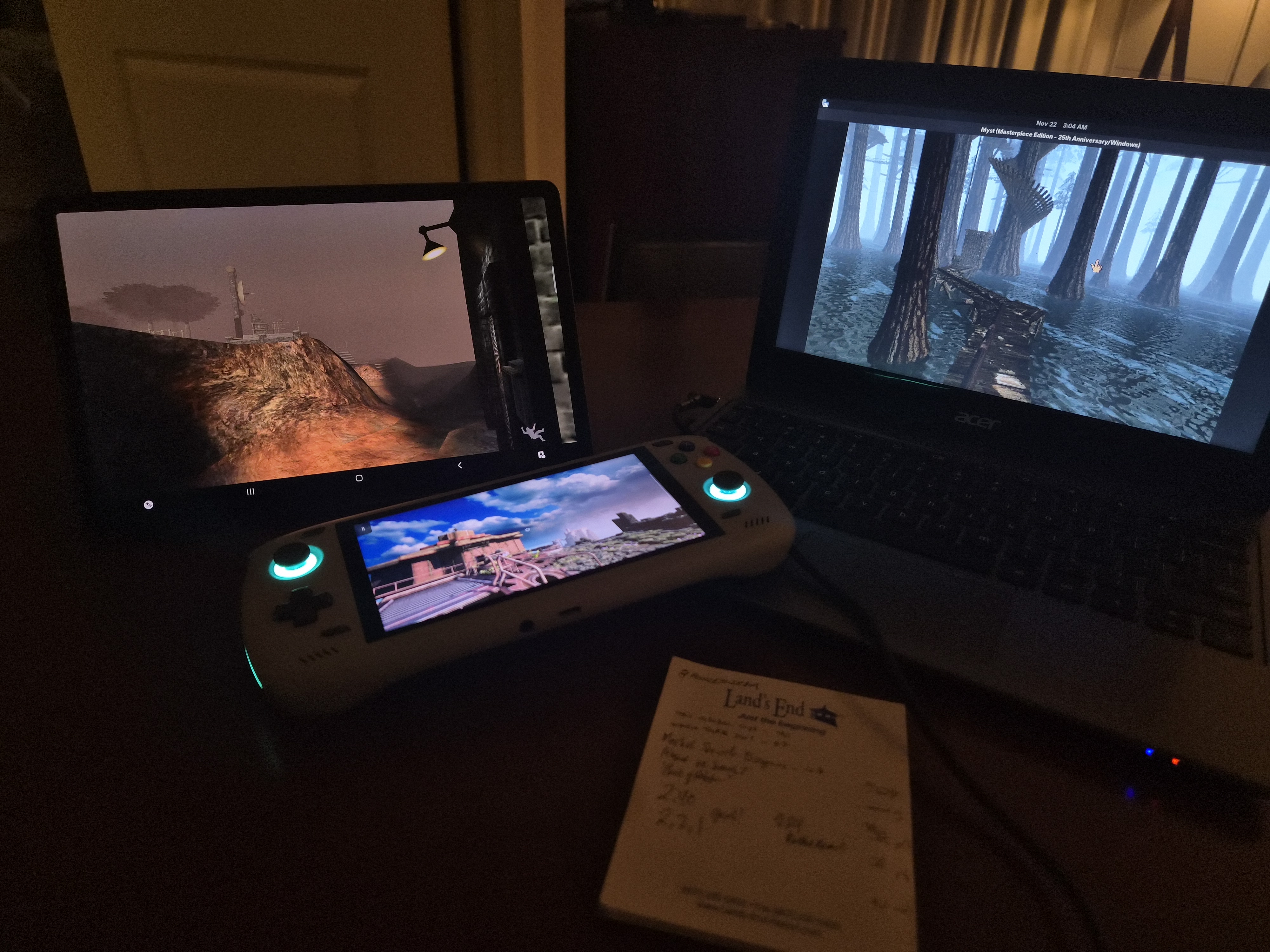
As The Stranger restores the pages they get a clearer image of Sirrus and Achenar in the books, explicitly urging The Stranger to distrust the other brother. Sirrus accuses Achenar of being a brutal wild man while Achenar accuses Sirrus of being a greedy schemer. Upon visiting Channelwood The Stranger will find bedrooms telling just a bit about who Sirrus and Achenar are. Sirrus clearly has a taste for the finer things. His quarters are outfitted with modern plumbing and feature an ornate bed and frame. Achenar's Channelwood living space is a distrubing reflection of what Sirrus accused him of being featuring a recorded projection of Achenar doing some bizzare chant and in Stoneship, a lamp made out of a human ribcage. The Stranger has enough reason to trust either's account of the other's foibles, but nothing is truly confirmed until The Stranger visits The Mechanical Age; In similarly themed living quarters The Stranger stumbles upon hidden chambers in each. Sirrus was clearly hoarding gold and Achenar was keeping a chilling torture chamber just next to where he slept.
 The Stranger, after collecting all but one of the pages for each book is left with a final choice, should they free Achenar, or Sirrus? The Stranger is told where to collect the final pages but urged not to even touch the book next to them, as it will trap The Stranger like they are.
The Stranger, after collecting all but one of the pages for each book is left with a final choice, should they free Achenar, or Sirrus? The Stranger is told where to collect the final pages but urged not to even touch the book next to them, as it will trap The Stranger like they are.
WARNING SPOILERS AHEAD
Freeing Achenar results in The Stranger being trapped in the book, however instead of Achenar returning the favor of helping him escape the void of the trap book he starts tearing out pages, stranding The Stranger.
Freeing Sirrus results in the The Stranger being trapped in the book, however instead of Sirrus returning the favor of helping him escape the void of the trap book he starts tearing out pages, stranding The Stranger.
If The Stranger realizes that neither Sirrus nor Achenar can be trusted they can choose to open the book they were told not to open. Upon opening it they are met with the image of Atrus confirming The Stranger's suspicions. The Stranger is instructed on how to collect the missing page from the linking book between Atrus and Myst. The Stranger entered the book and is thanked by Atrus for their aid. Atrus leaves for a moment and states that all they can offer is open access to the library on Myst. The Stranger returns to the library to find scorch marks where the trap books were once held.
This narrative is told through the player's exploration, with largely nodal elements not necessarily affecting outcomes (outside the ending) but rather affecting what the player sees and experiences from the story. What is interesting about the systems the Millers put in place for the player to input for is that it really isnt that complex. A lot of the story has already happened. In most franchise wide summaries The Stranger's story is summarized in one sentence. However in Myst the Player's story: the notebook next to the keyboard, the clicking, the late night mulling over obtuse clues, the reloading after choosing the "wrong brother". This is what defines the narrative of Myst its somehow both a "String and Pearl" (ala Schell, 2008) and emergent play rolled into one.
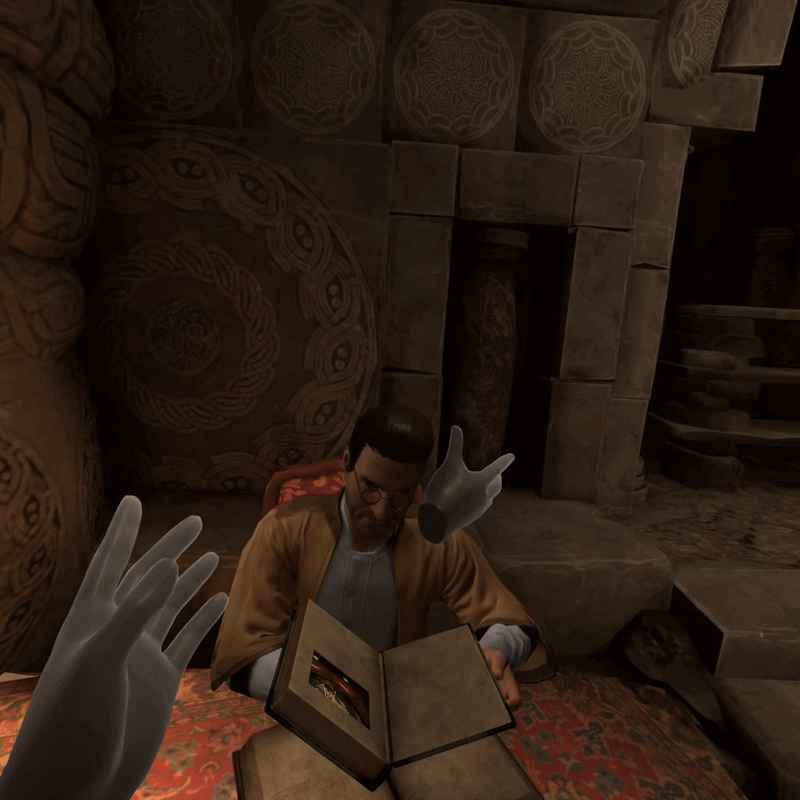
There's an argument that can be made about the concept of any game being an implied narrative about the player's experience with it. However Myst and its successors are exemplary at fusing it's set, "hard-coded" narrative with the player's own narrative. The details of the world are the system you choosing to engage with them, or skip ahead reading nothing is the input. In Myst there is a story to discover, but at the same time there is a story yet to be told.
I find it interesting how similar my discovery of the game runs parallel with the Stranger's discovery of the linking book. This strange, enigmatic CD-ROM seemed, in retrospect, to appear before me. Why I was drawn to it more than any other title of that haul sill eludes me.The "Vibes"
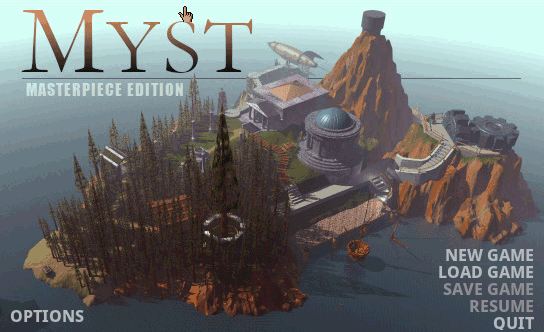
The core experience of Myst can really be felt through the many versions of the game, given the interfaces and the player remain frictionless (I do NOT recommend the Saturn version). The essential experience is similar to a recent viral phenomenon known as "liminal spaces" while the world used to mean a "place inbetween states" it has come be to be defined by a strangely uninhabited place in which existing in gives the feeling that one should not be there, think empty shopping malls, or a ghost town. Myst really does evoke that simple but foreboding feeling that something is seriously wrong. You can create a game that resembles Myst in just about every way, but if any component fails to acheive this same ominous quality the narrative falls apart immediately. The player must feel immersed. The original may not work for some, lots of dithering, low poly models and slow trasitions between views may turn some off. realMyst may work for others, but it does change the visuals just enough that spaces feel less alien. The remake however is Cyan at their absolute best in this immersion. The graphics are more realistic, so I have a harder time prefering it to the masterpiece edition upscales, but, playing the title in VR is like popping that CD-ROM in for the first time all over again. What helps is the added ability to randomize the game's puzzles and solutions. Over all any version of Myst is recommended, and frankly prescribed for the modern wearyness around the game industry. Moreso than anything about the game, Cyan continuing to do their quirky little games with their quirky design shows there will always be artists working in the medium.
I like Myst because its Myst. C.S. Lewis once presented the idea of "Donegality" stating that people dont like Donegal because of any one element, but because of the essence of what it is as a place. Myst has a certain Myst-ness to it's narrative and its experience unlike any other game that had come before and has come after.